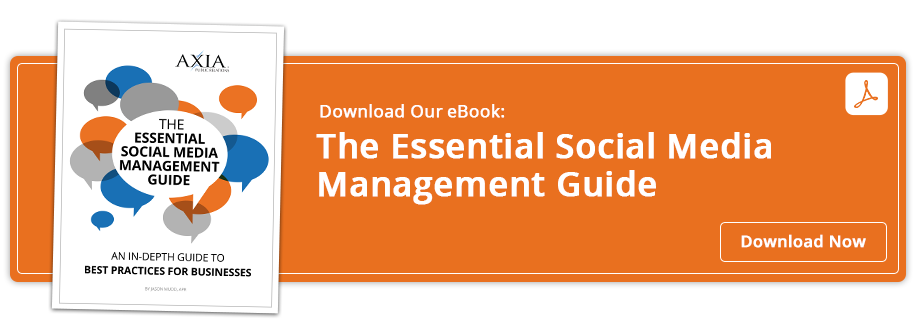7 ideas to consider before taking a stance on a social or political issue
By Marjorie ComerAugust 22, 2023
Before your company takes a stance, consider what it will mean to your audience.
 Companies make unintentional mistakes more often than consumers typically realize, whether it’s a typo in a newsletter or a personal post mistakenly uploaded to your company’s social media.
Companies make unintentional mistakes more often than consumers typically realize, whether it’s a typo in a newsletter or a personal post mistakenly uploaded to your company’s social media.
Consumers may never realize the mistake. At times, however, a misstep can turn out to be far more serious, such as when a company publicly takes a stance on social or political issues.
Audio: Listen to this article.
In the spring of 2023, consumers decided to boycott Target due to their support of Pride, leading to at least 10 billion in stock loss. Consumers are also boycotting Bud Light for the second month due to its hiring of a spokesperson, which has resulted in Bud Light losing its top placement as America’s beer of choice.
In these cases, like it or not, there are many consumers who have different values and ideals than you or your company may have. This can cause friction as your national company tries to manage and appeal to all audiences –– and you may always anger someone.
Political stances may be polarizing to not only your company’s customers but also to populations that span outside of your target audience. Before taking a stance, your company needs to consider these seven ideas.
1. Social media has power.
It’s important to remember social media has the power to uplift or destroy brand messaging. A polarizing statement or position can take on a whole new meaning because of the power of social media. Most often when a story goes viral, it will typically lose traction within 48 hours. However, it’s becoming more and more common that a viral post on social media lasts longer than the overall 96-hour cycle.
2. Prepare for unintended consequences.
Consider and discuss unintended consequences. Taking a stance on a social or political issue, for example, shouldn’t be made by one person at the company. Having more than one person involved can allow you to have a conversation about various ideas you have, as well as the pros and cons of utilizing a certain release, sponsorship, or spokesperson. Having more than one person in on the conversation can lead to additional ideas and provide perspective of an idea not previously considered. This also means the decision isn’t solely left to the marketing person and that the company’s key messages are being used correctly.
3. Seek diversity.
If your company hasn’t done so, ensure you’re utilizing the diversity of your internal team. They will be a great resource to share any cultural concerns your company’s efforts might represent. For example, seeking diversity through the hiring process at your company can help create more representative company messages to consumers, in turn preventing issues in the future.
4. Own it.
You can’t blame this decision on a brand manager. You –– as a key executive in the company –– need to own your brand’s stance and ensure your company’s top executives own the decision as well. Your company doesn’t have control over content once it’s shared. Your brand needs to prepare itself for consumers or outside individuals to potentially change your intended narrative.
5. Is going viral worth it?
Pushing to be viral may have consequences. Even if it’s being shared for the right reasons, for many of your consumers, there is always the possibility a positive post can quickly become polarizing.
6. Do the research.
Try to do market research or focus groups to get the pulse of where your customers stand on certain hot button topics. It may be necessary to invest money into this market research. Sometimes, though, this could be a survey sent to customers or a survey advertisement on social media.
7. Consider the future.
What may be considered a conventional and non-polarizing idea now might not remain that way five to 10 years in the future. If you’re not your company’s first CEO, you should also think about how you and your company would handle a decision made by a previous CEO or marketing company that wasn’t originally polarizing.
Even with a loyal company following, one misstep can change the landscape and course of a company completely. Today’s 24-hour news cycle and the current viral environment means companies face being inundated with negative comments online and consumers fighting back with their wallet. These elements hurt brands far quicker than they did 20 years ago.
Be prepared for a viral and boycott onslaught to negatively impact your company by having a crisis plan in place. Download our e-book “Managing Public Relations in a Crisis” to help your company create a baseline.
 Clients love Marjorie’s work ethic, speed and diligence. She has worked with Axia Public Relations since October 2011. Marjorie graduated from Rockhurst University with a Bachelor of Arts in communication and loves to cheer for her hometown Kansas City Royals. Learn more about Marjorie.
Clients love Marjorie’s work ethic, speed and diligence. She has worked with Axia Public Relations since October 2011. Marjorie graduated from Rockhurst University with a Bachelor of Arts in communication and loves to cheer for her hometown Kansas City Royals. Learn more about Marjorie.
Photo by Andrea Piacquadio
Topics: crisis communications, shared media, social media


Comment on This Article